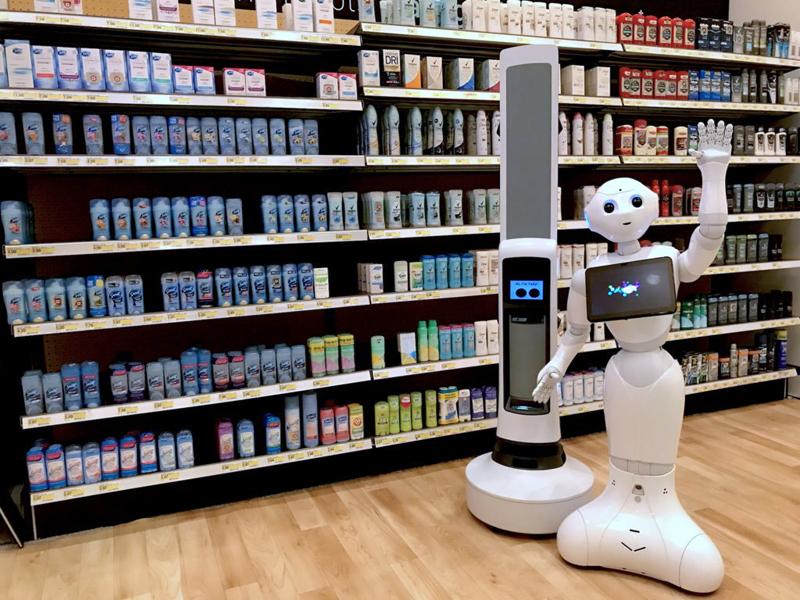The Rising Use of Robots in Retail Stores

Inventory Management and Stocking
Robots are increasingly being used by retailers to manage inventory and restock shelves. Shelf-scanning robots can autonomously navigate retail store aisles and use computer vision to scan shelf tags and item barcodes, identifying out-of-stock or misplaced products. This allows employees to quickly see what needs to be restocked from the backroom. Automated storage and retrieval systems are also being adopted, where robots retrieve bins of products from vast warehouse-style storage areas to refill shelves. This eliminates the laborious manual process of locating, transporting and refilling each product. The data captured from inventory robots allows retail managers to more accurately track stock levels in real-time and better predict replenishment needs.
Customer Service and Engagement
To improve the customer experience, retailers are exploring new ways robots can directly interact with and assist shoppers. Social robots that can navigate stores autonomously while holding basic conversations are being trialled. Examples include Retail Robots that can answer common questions, provide directions to product locations, and potentially even assist with purchases at self-checkout registers. Mobile robots with touchscreen tablets are demonstrating products to customers who may be curious about smart refrigerators or high-end electronics. Some retailers see an opportunity for robot companions to offer a more personalized shopping experience for customers looking for expert advice or recommendations. However, significant technological challenges remain around making robots safe, harmless, and honest in social interactions with people in busy public spaces like stores.
Safety and Security
For safety and security purposes, robots are an attractive option for retailers. Autonomous machines equipped with cameras, microphones, and sensors can monitor stores continuously without breaks for fatigue. They can help patrol premises, identify hazards, detect unauthorized persons, and scan crowds and queues for signs of distress. Mobile security robots can automatically patrol store perimeters inside and out, acting as a visible deterrent against theft or vandalism. In the event of emergencies like fires or medical issues, dashboard alerts from safety robots could notify employees faster than traditional human spotting alone. For retailers with large floor areas, robots save on labor costs compared to relying solely on human security guards who require wages and benefits. However, tasks involving interactions that require discretion, empathy or common sense still rely on human judgment.
Fulfillment and Delivery
Fulfilling online orders and delivering purchases to customers' homes and businesses presents fresh opportunities for robots. Automated fulfillment systems can lift, scan, count, package and label products far more quickly, carefully and consistently than any person. Fleets of delivery robots, whether wheeled or aerial drones, can autonomously transport packages or prepared food directly from distribution centers or "dark stores" to front doors within a few hours. This removes costly elements like fuel, traffic, parking and driver wages from the delivery equation. For customers craving immediacy and convenience, robot-based delivery systems enable ultra-fast fulfillment windows previously unheard of in traditional retail. However, harsh outdoor conditions and navigating streets filled with pedestrians, vehicles and obstacles remain significant challenges that will require continued research and refinement to solve.
Work Processes and Supply Chains
Behind the scenes, operational robots are taking over manual material handling jobs throughout retail supply chains. Autonomous mobile robots transport pallets and totes between loading docks, warehouses, distribution centers and store backrooms. Lifting systems use robotics to precisely pick, pack and sort products for delivery with far greater speed, accuracy and ergonomic efficiency compared to human selection. In retail facilities struggling to fill physical labor positions, industrial robots are allowing core distribution work to continue without pause. Automated truck loading, conveyor systems and package routing enable lean processes with predictable, measurable metrics for quality assurance. Integrating robotics at key points throughout long-distance supply chains helps companies achieve the goal of optimized "just in time" product replenishment as demand fluctuates. This increases reliability, consistency of service and bottom-line cost savings across vast retail networks.
Robots are demonstrating immense capability in transforming core retail operations around inventory, fulfillment, customer service, security and supply chain logistics. Their deployment represents major ongoing efficiency gains for retailers globally. While human skills remain essential in roles involving complex judgment, creativity and compassion, autonomous machines are proving indispensable robotic allies for businesses grappling with labor shortages and rising operational expenses. Continued advances promise even wider adoption of robotics as technology improves and costs reduce further in coming years. Retailers aiming to thrive in the competitive future must strategically evaluate where and how robotics may augment existing workflows or entirely reinvent aspects of their business models.
Get more insights, On Retail Robots
- Art
- Causes
- Crafts
- Dance
- Drinks
- Film
- Fitness
- Food
- Juegos
- Gardening
- Health
- Home
- Literature
- Music
- Networking
- Other
- Party
- Religion
- Shopping
- Sports
- Theater
- Wellness
- IT, Cloud, Software and Technology


